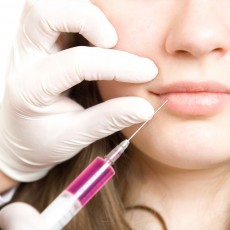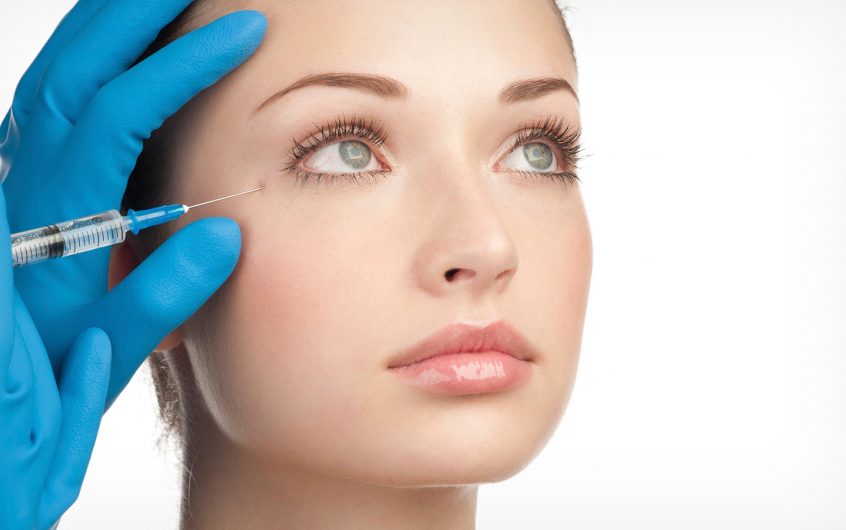BOTOX Cosmetic is the only approved method for getting rid of frown lines and crow’s feet in adults.
A Botox injectable has a very little protein that comes from the clostridium botulinum bacterium. Your doctor will use a very small needle to inject it into your facial muscles. It stops muscle activity for a short while, and this makes it hard for you to squint or frown.
What is Botox
The Botox protein, which is the same thing that can cause food poisoning. It is also used to treat neurological problems. When used for cosmetic purposes, a small amount is injected into the muscles to get rid of wrinkles. Botox treatments can last 3-4 months.
It is a prescribed medication that is injected into your muscles to temporarily get rid of crow’s feet and frown lines that can be seen between your eyebrows.
This treatment has a small amount of purified botulinum toxin protein that comes from Clostridium botulinum. Not all Botox products are the same when it comes to strength and formulas, which means that one cannot be substituted for the other. This is why there isn’t a generic version of BOTOX Cosmetic.
It works to reduce the appearance of frown and crow’s feet lines by targeting the muscles that cause these lines. The provider injects the muscles with Botox to decrease the movement of the muscles. Soon you will see smoother lines between your eyebrows.
Wrinkles occur for many reasons. They may result from numerous things such as a decrease in collagen, cell changes, sun exposure or free radicals in the environment. They also exists because frowning causes the muscles between eyebrows to contract, and this makes the skin fold and wrinkle. Also, squinting has the same type of results, but it causes crow’s feet.
Botox goes underneath the skin and works on the muscles that cause these unattractive lines.
For crow’s feet, the provider will put 3 injections of Botox in the muscles that are on the sides of the eyes. For the frown lines, 5 injections will be put into the forehead muscles. One injection goes into the procerus, and the others into the corrugator muscles.
When Botox is injected into frown line muscles, it stops those muscles from temporarily moving. As a result, it also makes those lines appear smaller.
Why is Botox used?
It is mostly used to get rid of frown lines between the brows. Also it gets rid of forehead lines, crow’s feet and mouth lines.
How long does Botox last?
It will last for about three to four months.
What are the benefits of Botox?
Botox usage has many different benefits. It does not take a long time to inject, which can be done over the course of a lunch hour. It does not negatively impact the sensory nerves, which means that there will still be feeling in the injection area. It does not hurt. Also, you don’t have to be put to sleep during the procedure.

Botox Treatment
It takes about 10 minutes for the provider to make these injections. He will talk about the treatment will do and analyze your face so that he knows which Botox treatment is best for you. Your overall appearance will change, but the lines will not be as noticeable.
Botox is a very precise treatment. You will still be able to make facial expressions if your provider is trained and licensed.
Botox injections do not require a long healing period. Many people have these injections done during lunchtime. You can return to your normal activities the moment that you leave your provider’s office.
What is the Cost of Botox
There are different costs for Botox. If it is injected by a family physician or nurse, the amount can be about $10 per unit. If it is done by a dermatologist or cosmetic surgeon it can cost about $15 to $17 dollars. You will need about 12 to 16 units for a forehead procedure. A crow’s feet procedure will require about 12-15 units for each eye, and procedure for frown lines will require around 25-30 units.
There are different things that can impact the cost of Botox procedures. This mostly includes the product cost and the labor of the provider that administers the injection.
Botox has to be administered by a professional. Make sure that your provider is licensed, experienced and trained to administer Botox injections.
If the cost of Botox seem to be very inexpensive, then be cautious. Instead of concentrating on the cost of the product, it is best to find a qualified doctor who is licensed to administer the injection. He not only has to be skilled, but he should prescribe the right plan for you.
Botox procedure statistics in Canada
The administration of Botox is a well-researched procedure, and it is available in 78 countries. It is a product that most doctors are familiar with, and they know that it is a quality product. It is a safe and efficient product that has analyzed by Allergan clinical trials and reviewed in many medical and scientific journals.
Per Medicard, the average person who receives Botox injections is from Ontario, Quebec or British Columbia. She is usually in the age range of 35-50. The second largest age range is 19-34. Also, 83.5 percent of all recipients are women, but the number of men receiving Botox injections is rising.
About 10.9 million vials of Botox has been sold in America since 2002. It is the most sold injectable in the world.
There are basically 4 different types of dermal fillers, and they are collagen products, autologous fat injections, PMMA and hyaluronic acid products. Discuss your options with your physician and determine which one is best for you.
Hyaluronic acid (HA) products are the most commonly used dermal fillers in Canada. There are currently over 30 dermal fillers containing HA licensed for sale in Canada. These products last for about 6 to 12 months. But this duration depends on things such as the scar, the skin’s age and the type of dermal filler that is used.
Botox injections should only be injected by personnel that is licensed, experienced and qualified. Also, they should only be administered every two months or longer according to the Canadian Product Monograph. If you have problems speaking, breathing or swallowing, then seek medical attention immediately.
Botox results and the recovery process
Women are always looking for ways to decrease wrinkles. They opt for things such as facelifts, microdermabrasion, laser resurfacing and chemical peels to rejuvenate the skin. They are also using injectable such as Botox to look better.
You will see immediate results within one to two days, and these results will last up to 4 months. A lot patients say that Botox injections feel like pinches.
The physician may use ice for numbness before the injection. If you are afraid of pain, he may be able to give you a numbing cream before giving you the injection.
Botox risks and side effects
If you want to get Botox injections, talk to your physician first. You should know the possible side effects before opting for Botox injections. The following are possible Botox side effects:
- Temporary bruising
- Temporary headaches
- Restylane
A lot of Canadians want cosmetic injections in order to get rid of wrinkles and to make their skin look better. But you should know that there are risks associated with these types of procedures.
Health Canada is responsible for making sure that Canadians are healthy. It manages product risks by doing the following things:
- Maximizes safety and minimizes risks
- Makes it easier for Canadians to make healthy choices
- Produces information that helps Canadians choose wisely.
There have been serious reactions associated with Botox usage. You may experience things such as wheezing, rashes, asthma, itching, welts or dizziness. If you experience these things seek medical attention.
Skin tends to get older as the body gets old. Sun exposure tends to damage the skin and can cause sagging, liver spots, dryness and wrinkles.
Seek medical attention immediately if you have the following:
- Speech, swallowing problems
- Muscle weakness in other parts of the body
Keep in mind that Botox is not the same as other botulinum products. It can cause muscle weakness, dizziness or vision problems after the procedure is done. This means that you should not operate heavy machinery during this time.
You should also talk to your doctor and find out how Botox injections have side effects. It could cause an allergic reaction due to other products that you are using. Your physician can tell you about such adverse reactions and make sure that you don’t suffer from such medical reactions. Make sure that you read all product labels and understand the directions and warnings.
If you have a history of the following, make sure that you are cautious when opting for a cosmetic injectable:
- Problems swallowing
- Neurological problems
- Breathing problems
Also, do not use them if you have skin infections or are sensitive to any of the ingredients.
If Botox is not administered properly, this could cause problems. If the injections are administered incorrectly, this could lead to droopy eyelid muscles or other muscle weaknesses. Other bad side effects such as headaches, eye swelling, face paralysis, chest pain, skin rashes, bruising or pain could also result.
These side effects normally last just a short time, but they could linger for a few months.
Do not take Botox is you are allergic to any of its ingredients or have been allergic to other botulinum toxin products. Also avoid it if you have an infection. In addition, alert your doctor if you have nyasthenia gravis, Lou Gehrig’s disease, Lambert-Eaton syndrome, ALS or other nerve conditions. You should also tell you doctor if you have had recent facial surgeries, problems with facial muscles or if you are pregnant or breastfeeding.
Make sure that you doctor knows about the current medicines that you take. This includes herbs and vitamins. Sometimes Botox does not work well with other things. Also, don’t take any new medicines if you plan on receiving Botox treatments.
Inform you doctor if you have had previous Botox treatments within the last 4 months. This includes other botulinum injections as well. You should also tell him if you have had muscle relaxants, cold medicines, antibiotics, blood thinners or aspirin.
Injectable Dermal Filler, Risks and Side Effects
These are very popular injections. You should be aware of the risks and read all product labels. Health Canada says that dermal filler injections can cause side effects such as swelling, infections, allergies, redness, pain, bruising, abscesses, raised bumps and skin discoloration.
Most of these things only last for a short amount of time, but some could last for a couple of months or need to be treated. Some injections could cause scars or allergies. Some dermal fillers have ingredients that last forever, and if something goes wrong, surgery may be needed to correct the problem.
In order to reduce your risks, do not go through with treatment if you have any of the following medical conditions:
- Scars of keloids
- Skin infections
- A bleeding disorder
- Cysts
- Pimples
- Rashes
- Hives
- Egg allergies
- Lidocaine allergies
- Collagen allergies
- A history of anaphylactic shock
Keep in mind that some dermal fillers are not used on the lips.
Botox Alternatives
Restylane, Juvederm and Botox are some of the most popular anti-aging treatments on the market in Canada. A Medicard Financial survey discovered that around 142,374 injections were done in Canada in 2005. There were 126,554 other types of filler injections done in the same year. The number of injections for Botox and Botox alternatives continues to grow.
There is a lot of Botox injection information floating around, and the following information can help you choose which injectable filler is suitable for you.
Restylane
This is a hyaluronic acid that is found in most of the body’s tissues. It soaks up water like a sponge so it hydrates the skin and increases density. All of this goes away gradually because of age, hormones, medicines and sun exposure.
Why is Restylane used?
Restylane fills wrinkles, enhances the eybrows, smooths out eye hollows, makes the lips look better and puffs up the cheeks. It also defines the jaw line and enhances cheek contours. It has also been known to heal acne scars and improve facial symmetry. For instance, it can make a nose depression look softer.
How Long does Restylane Last?
This depends on the injection amount and location. If it is injected closer to the bone, then it will last for a longer duration. A regular lip injection could last as long as six months, but injections for laugh lines or cheek augmentation could last longer than this amount of time.
What is the Cost of Restylane?
What is the cost of Restylane compared to the cost of Botox? Although the cost of Restylane could be as much as one thousand dollars, it actually depends of numerous things. It could cost around $2500 to take care of the mouth, jaw, eyes, lips, nose bridge and cheeks.
How is Restylane Beneficial?
This injection filler can be used for different skin colors and types. It is not an animal product, which means that you won’t have to worry about allergies or getting a disease. There are some treatments that are single in nature, and the results are seen immediately. You can get half vials for touch-ups for lips or fine lines.
Are There Restylane Risks?
You can expect to see swelling and redness, but it is only temporary. It produces more lip swelling than other injectables.
Juvederm
Juvederm also is a type of hyaluronic acid, but it is a result of various manipulating techniques.
Why is Juvederm Used?
It treats really bad facial folds, lifts the eyebrows, smooths eye hollows, improves lips, cheeks and the chin. It can also be used to shape the nose.
How Long Does Juvederm Last?
It will last as long as six months.
How Much Does Juvederm Cost?
It is prices as high as $1,000. You will need at least one syringe for the lips. Each syringe costs in the range of $550-$700. The cheeks require about three syringes, and the naso-labial line requires at least one syringe.
Why is Juvederm Usage Beneficial?
It does not cause allergies or diseases. Also, Juvederm can be used on all skin types. It only requires one injection for many procedures, and you can see results immediately. In addition, it does not cause as much pain and swelling.
What of Some of the Juvederm Side Effects?
Common side effects are swelling, bruising, redness and tenderness. There have also been incidents of blood and nerve vessel ruptures.




